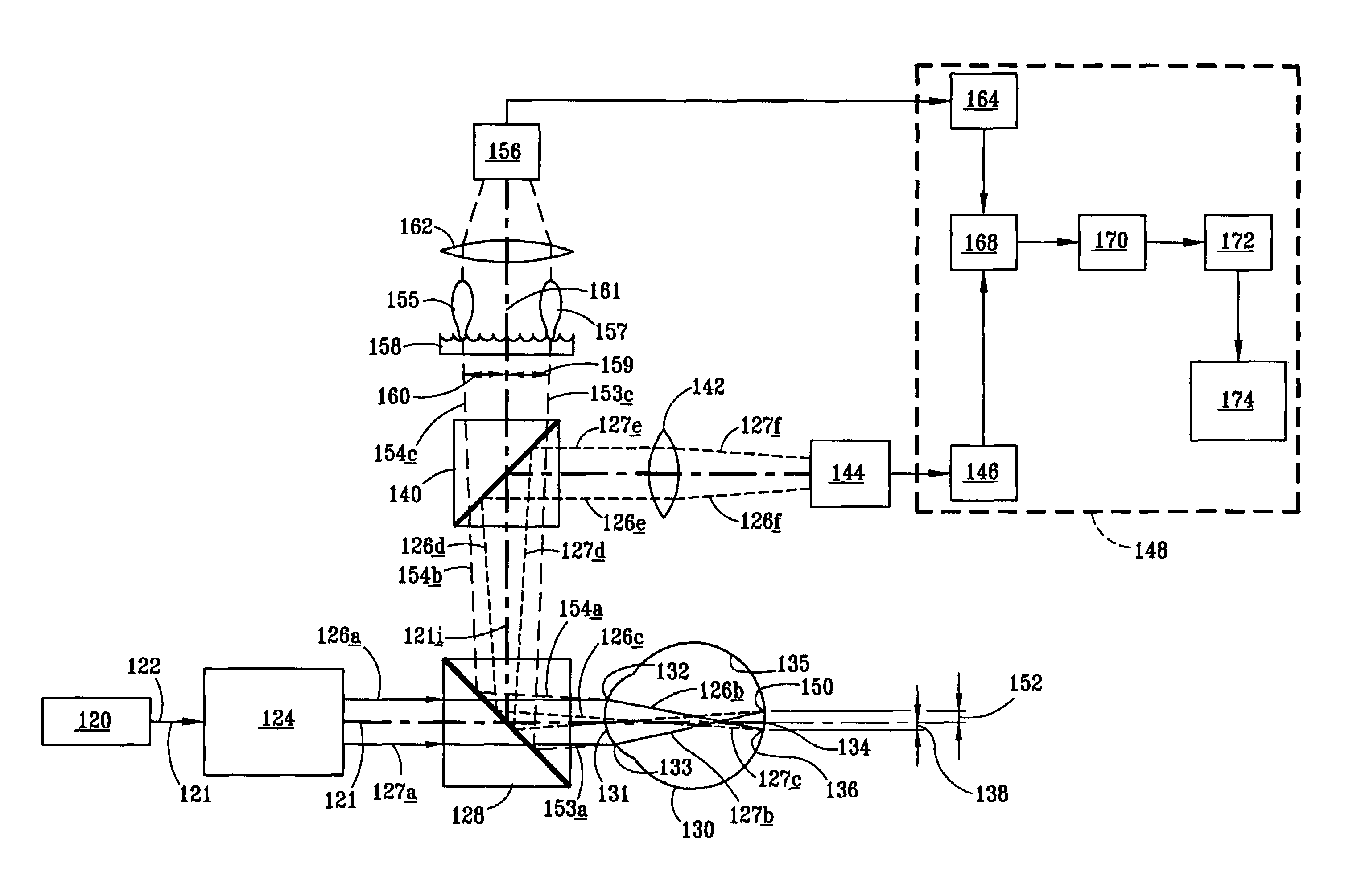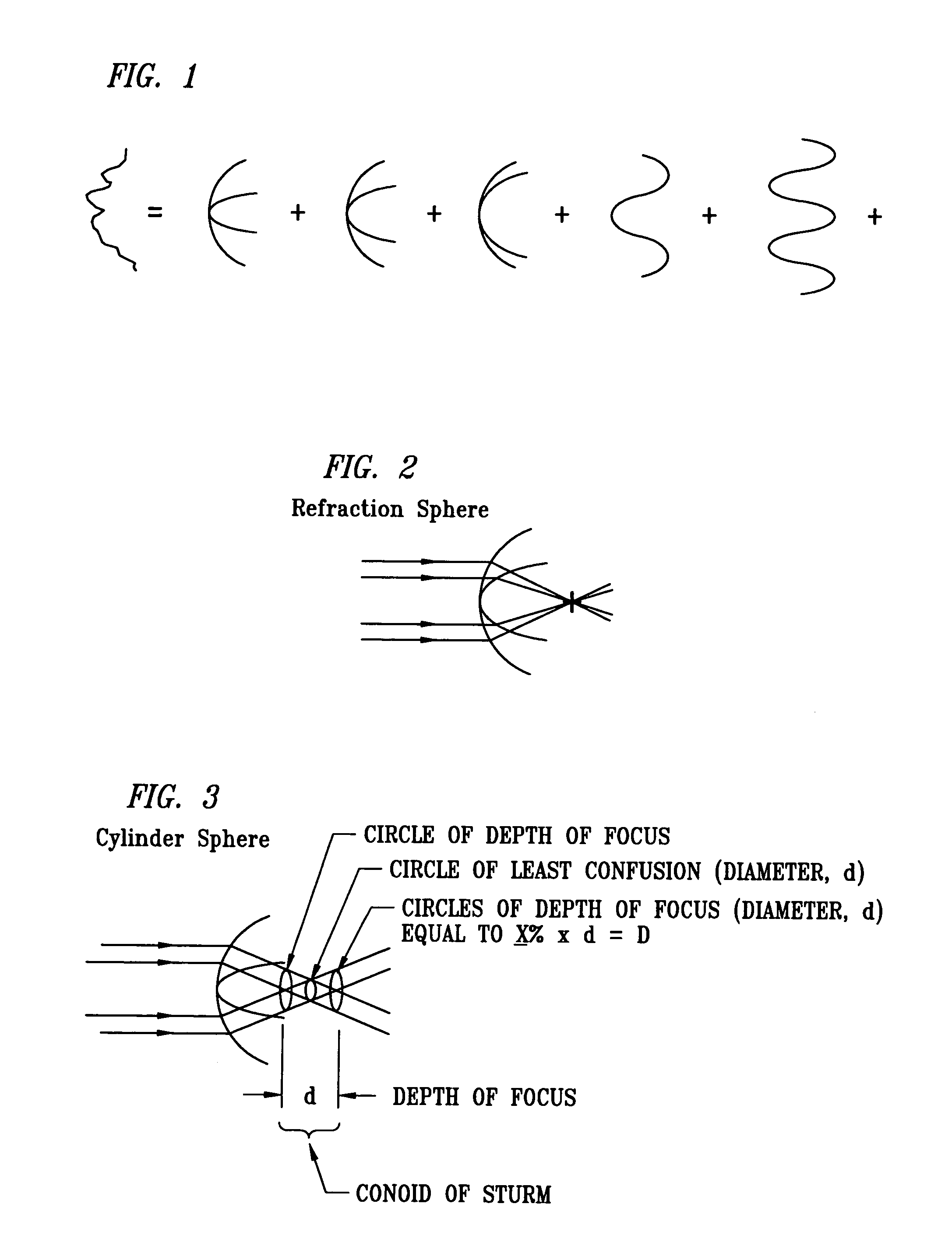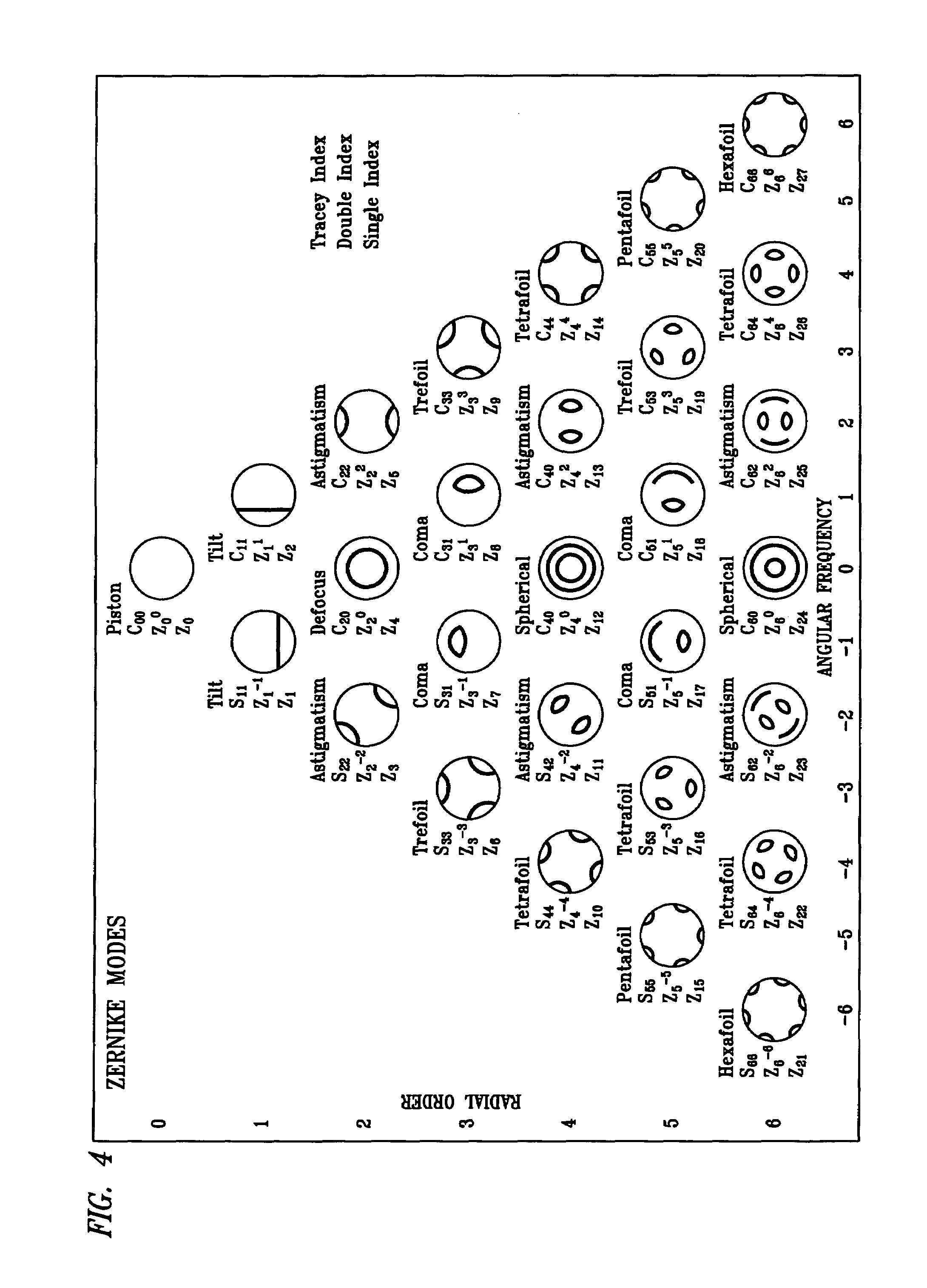Determining clinical refraction of eye
a clinical refraction and eye technology, applied in the field of human eye clinical refraction, can solve the problems of inaccuracy of wavefront in certain real eye situations, drawbacks in more complicated cases,
- Summary
- Abstract
- Description
- Claims
- Application Information
AI Technical Summary
Benefits of technology
Problems solved by technology
Method used
Image
Examples
Embodiment Construction
[0070]It has been discovered that defining the clinical refraction or the correction of an eye using Zernike Polynomial calculation of the wavefront can produce inaccuracies in certain real eye situations. The use of Zernike Polynomials as a mathematical language for defining refractive characteristics may continue to be useful. (See FIG. 4) Wavefront measurement expressed in terms of low order Zernike polynomials may be used in simple cases to produce acceptable analysis in correlating with the quality of vision for that patient. One aspect of the invention is to improve the accuracy and usefulness of Zernike Polynomial calculations by using selected higher order expansion terms that are not currently used in typical wavefront aberration determinations. (See FIG. 5.) For example in complicated cases where a wavefront aberration is expressed in terms of a Zernike polynomial using only second order terms (i.e., lower order) when used to direct correction, does not produce the desired...
PUM
 Login to View More
Login to View More Abstract
Description
Claims
Application Information
 Login to View More
Login to View More - R&D
- Intellectual Property
- Life Sciences
- Materials
- Tech Scout
- Unparalleled Data Quality
- Higher Quality Content
- 60% Fewer Hallucinations
Browse by: Latest US Patents, China's latest patents, Technical Efficacy Thesaurus, Application Domain, Technology Topic, Popular Technical Reports.
© 2025 PatSnap. All rights reserved.Legal|Privacy policy|Modern Slavery Act Transparency Statement|Sitemap|About US| Contact US: help@patsnap.com



